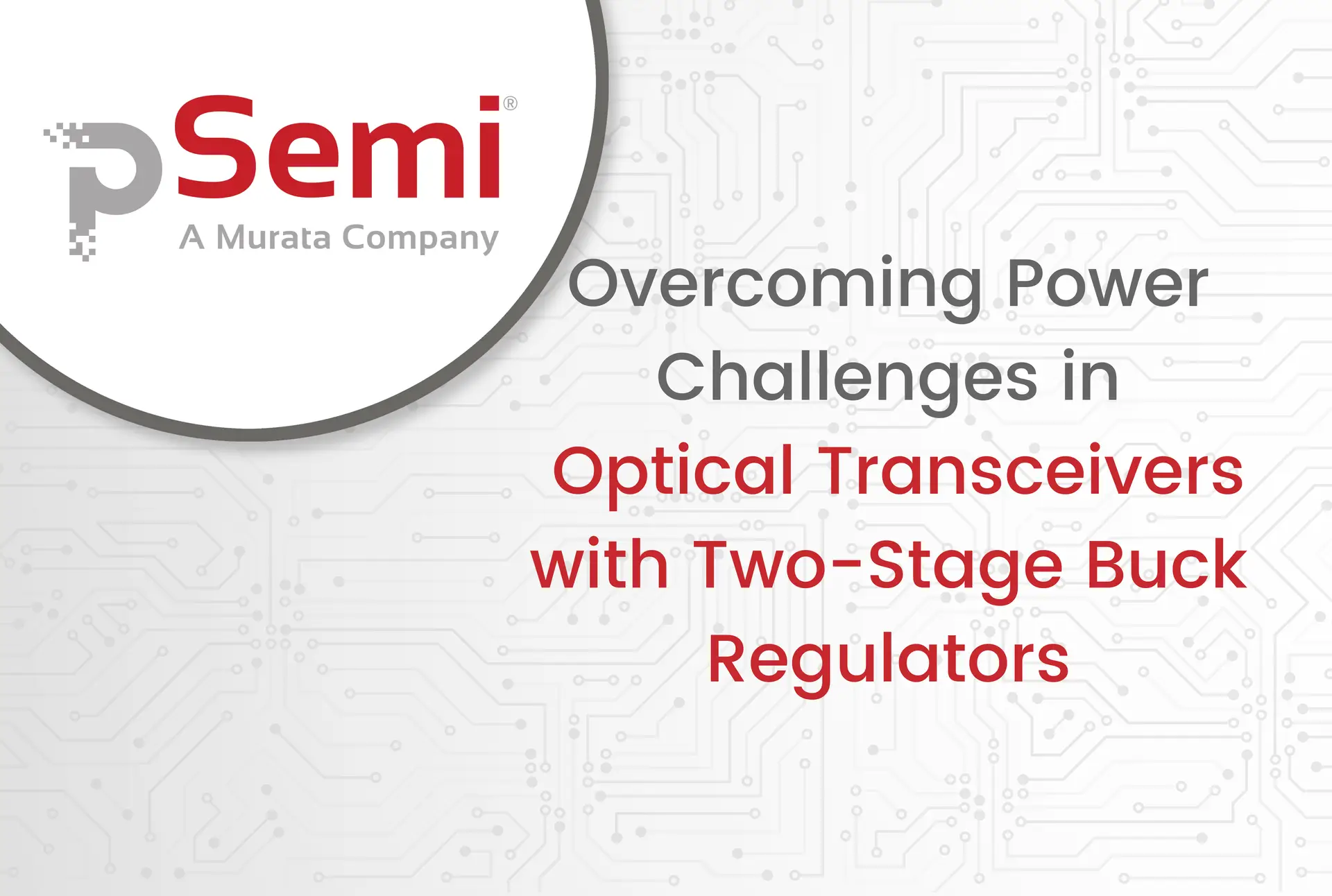pSemi recently published an article with How2Power discussing the benefits of our high-efficiency, two-stage power regulator architecture in optical transceiver applications.
In the article, we introduce the two-stage buck regulator architecture as an innovative method of achieving efficient conversion from high-input to low-output voltages. This novel architecture consists of a first-stage charge pump to divide the input voltage down to a lower intermediate value, followed by a second-stage buck regulator. In devices produced by pSemi, the two stages are integrated in a single, monolithic die and combine to provide a highly efficient solution for high stepdown conversion ratios.
“The two-stage architecture is ideally suited to pluggable, optical transceiver modules,” said Tatsuya Kubo, product manager for pSemi’s and Murata’s high efficiency buck regulator and charge pump portfolios. “The movement to higher transmission rates (100 to 800 Gbits) requires more powerful DSPs and ASICs with lower core voltage of 0.3 V to 0.5 V. Two-stage conversion provides higher efficiency in a lower profile (<1.2mm) solution, ideal for placement under the main data processing IC.”
